E3 ligase FBXW7 suppresses brown fat expansion and browning of white fat
- PMID: 39747664
- PMCID: PMC11811183
- DOI: 10.1038/s44319-024-00337-w
E3 ligase FBXW7 suppresses brown fat expansion and browning of white fat
Abstract
Thermogenic fat, including brown and beige fat, dissipates heat via thermogenesis and enhances energy expenditure. Thus, its activation represents a therapeutic strategy to combat obesity. Here, we demonstrate that levels of F-box and WD repeat domain-containing 7 (FBXW7), an E3 ubiquitin protein ligase, negatively correlate with thermogenic fat functionality. FBXW7 overexpression in fat suppresses energy expenditure and thermogenesis, thus aggravates obesity and metabolic dysfunctions in mice. Conversely, FBXW7 depletion in fat leads to brown fat expansion and browning of white fat, and protects mice from diet induced obesity, hepatic steatosis, and hyperlipidemia. Mechanistically, FBXW7 binds to S6K1 and promotes its ubiquitination and proteasomal degradation, which in turn impacts glycolysis and brown preadipocyte proliferation via lactate. Besides, the beneficial metabolic effects of FBXW7 depletion in fat are attenuated by fat-specific knockdown of S6K1 in vivo. In summary, we provide evidence that adipose FBXW7 acts as a major regulator for thermogenic fat biology and energy homeostasis and serves as potential therapeutic target for obesity and metabolic diseases.
Keywords: Brown Fat Expansion; Browning of White Fat; Obesity; Thermogenic Fat; Ubiquitination.
© 2025. The Author(s).
Conflict of interest statement
Disclosure and competing interests statement. The authors declare no competing interests.
Figures
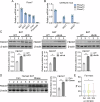
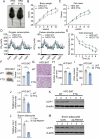
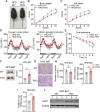
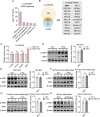

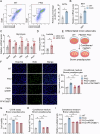

Similar articles
-
Foxj3 Regulates Thermogenesis of Brown and Beige Fat Via Induction of PGC-1α.Diabetes. 2024 Feb 1;73(2):178-196. doi: 10.2337/db23-0454. Diabetes. 2024. PMID: 37939221
-
BAP1 Suppresses White Adipose Tissue Browning and Thermogenesis Through Deubiquitinating KDM1B.Diabetes. 2025 Jul 1;74(7):1153-1167. doi: 10.2337/db24-1011. Diabetes. 2025. PMID: 40208259
-
miRNA-22 deletion limits white adipose expansion and activates brown fat to attenuate high-fat diet-induced fat mass accumulation.Metabolism. 2021 Apr;117:154723. doi: 10.1016/j.metabol.2021.154723. Epub 2021 Feb 5. Metabolism. 2021. PMID: 33549579 Free PMC article.
-
Molecular epigenetics in the transition of white to brown fat.Pathol Res Pract. 2025 Aug;272:156073. doi: 10.1016/j.prp.2025.156073. Epub 2025 Jun 4. Pathol Res Pract. 2025. PMID: 40482385 Review.
-
Natural Bioactive Compounds as Potential Browning Agents in White Adipose Tissue.Pharm Res. 2021 Apr;38(4):549-567. doi: 10.1007/s11095-021-03027-7. Epub 2021 Mar 30. Pharm Res. 2021. PMID: 33783666 Free PMC article. Review.
References
-
- Albert V, Hall MN (2015) mTOR signaling in cellular and organismal energetics. Curr Opin Cell Biol 33:55–66 - PubMed
-
- Balaji V, Pokrzywa W, Hoppe T (2018) Ubiquitylation pathways in insulin signaling and organismal homeostasis. Bioessays 40:e1700223 - PubMed
-
- Bartelt A, Heeren J (2014) Adipose tissue browning and metabolic health. Nat Rev Endocrinol 10:24–36 - PubMed
MeSH terms
Substances
Grants and funding
- 32325024,82300979,32222024,32271224,32071148,22225702,82000802/MOST | National Natural Science Foundation of China (NSFC)
- 2023YFA1800400,2019YFA09004500/MOST | National Key Research and Development Program of China (NKPs)
- 22ZR1421200,21140904300/Science and Technology Commission of Shanghai Municipality (STCSM)
- CSTB2022NSCQ-JQX0033/Natural Science Foundation of Chongqing, China
- 2021C03069/Key Research and Development Project of Zhejiang Province, China
- LY20H070003/Zhejiang Provincial Natural Science Foundation of China
- SHSMU-ZDCX20212700/Innovation research team of high-level local universities in Shanghai
- 2022ZZ01002/Shanghai Research Center for Endocrine and Metabolic Diseases
- 2023M741184/China Postdoctoral Science Foundation(China Postdoctoral Foundation Project)
LinkOut - more resources
Full Text Sources

